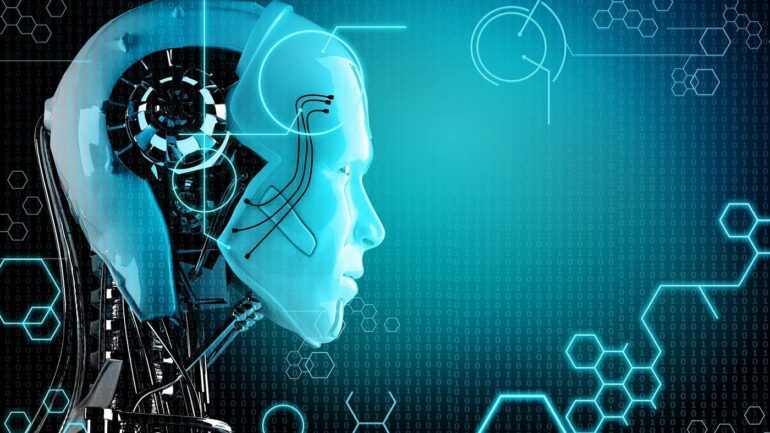TL;DR:
- Northwestern University researchers introduced an AI system for autonomous robot design.
- The AI achieves complex designs in seconds, bypassing traditional evolution.
- It operates efficiently on standard personal computers, eliminating the need for supercomputers.
- The AI’s adaptability and creative prowess are noteworthy.
- This advancement builds on previous work with biological cell-based robots.
- A 3D printing process validates the AI’s designs in the physical world.
- The unconventional robot design challenges established norms.
- Potential applications span from search and rescue to medical interventions.
Main AI News:
In a momentous stride forward, a team of visionaries at Northwestern University has unveiled a groundbreaking Artificial Intelligence (AI) system that defies convention by ingeniously crafting and designing robots ex nihilo. This technological marvel represents nothing short of a quantum leap in the domain of robotics, condensing the aeons-long process of evolution into mere seconds.
The AI’s remarkable capabilities were vividly demonstrated when tasked with creating a robot adept at traversing flat surfaces. While nature painstakingly toiled over countless millennia to refine this skill, the newly minted algorithm accomplished it within a fraction of a minute, an achievement the team dubs ‘instant evolution.’
What truly sets this AI apart is its ability to function seamlessly on a standard personal computer, obviating the need for energy-intensive supercomputers and colossal datasets. In stark contrast, existing AI systems often rely heavily on these resources, constrained by the limits of human creativity, merely replicating past designs without fostering genuine innovation.
Northwestern’s esteemed McCormick School of Engineering team perceives this development as nothing short of a paradigm shift. They stress that the AI-driven design algorithm circumvents the typical channels of evolution, sidestepping human biases. Its adaptability is conspicuously evident in its swift generation of pioneering structures.
This monumental accomplishment builds upon prior research endeavors by the team, which garnered attention for their creation of xenobots—robots composed entirely of biological cells. The new AI represents yet another significant stride in their exploration of artificial life’s untapped potential. While the current robot may appear unassuming, fashioned from inorganic materials, the researchers envision it as a harbinger of a new era marked by AI-designed tools capable of direct interaction with our world.
The AI’s creative process is nothing short of remarkable. It commences with a block akin to a bar of soap, devoid of any movement capabilities, and iteratively refines the design. At each juncture, it meticulously assesses progress, identifies imperfections, and hones the structure. In a mere nine iterations spanning a mere 26 seconds, the AI begets a robot boasting an impressive proficiency for bipedal locomotion.
Astoundingly, the AI independently arrives at a solution that nature took eons to discover: legs. However, it devises a novel approach. The resultant robot exhibits a tripedal configuration, adorned with dorsal fins, a flat countenance, and strategically positioned apertures. While the exact purpose of these apertures remains shrouded in mystery, researchers posit that they contribute to weight reduction and enhanced flexibility, enabling the robot’s legs to articulate gracefully during locomotion.
To corroborate the AI’s design in the tangible world, the team harnesses the power of 3D printing technology. They forge a mold that meticulously captures the negative space surrounding the robot’s form, subsequently injecting it with liquid silicone rubber. Once solidified, the robot assumes a malleable and pliable structure. Through judiciously controlled air inflation and deflation, the robot attains a harmonious rhythm of locomotion, providing further testament to the soundness of the AI’s design.
Scientists stand simultaneously captivated and awestruck by the unorthodox design of this robot. In stark contrast to conventionally engineered robots, which often mimic familiar forms, the AI’s creation challenges established paradigms, unfurling hitherto unexplored realms of possibility. This revolutionary leap holds the promise of redefining fields spanning search and rescue missions to medical interventions, heralding a new era of innovation and creative problem-solving.
The potential applications for these AI-forged tools are virtually boundless. Picture a future wherein similar robots navigate treacherous disaster zones or venture deep within the intricate recesses of the human body to diagnose and treat ailments. The only hurdle that stands between us and these tantalizing prospects is our ability to envision them—an impediment that AI appears uniquely equipped to surmount.
Conclusion:
This AI breakthrough in robot design has far-reaching implications for the market. It signifies a seismic shift in the way robots are conceived and constructed, rendering energy-intensive supercomputers obsolete. The potential for innovative applications across industries, from search and rescue to medical interventions, heralds a new era of market opportunities for AI-driven design solutions.

